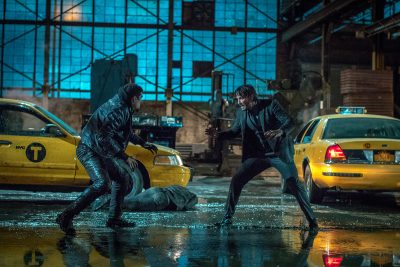
Three years ago, Keanu Reeves made a triumphant return to the action scene with 2014 “John Wick,” directed by former “The Matrix” stunt doubles, Chad Stahelski and David Leitch. Critics and fans praised the film for its neo-noir style, as well as its straightforward concept: mob members attack John (Reeves), a retired hitman. They steal his car. They kill his dog. He wants revenge. No gimmicks, no frills, just Reeves kicking ass. In a movie landscape of increasingly complicated cinematic universes and reboots, the simple formula of an old school, martial arts action flick proved exactly what the genre needed.
That is not to say the films do not operate in their own universe of sorts. The “John Wick” films take place in a world where everyone and anyone could be part of an underground ring of world-class assassins, attackers and heroes remain conscious despite several fatal wounds and can wear bulletproof body armor as thin as a T-shirt underneath a stylish suit.
In many ways, the fantasy makes John Wick a superhero for grown-ups. At the end of the 2014 film, John had defeated his enemies and set off to return to his life of quiet retirement with a new dog. This is where “John Wick: Chapter 2,” released on Friday, picks up, and unlike its slow-burning predecessor, kicks off with a bang.
Soon, John is drawn back into the criminal underworld he once escaped in order to pay back an old debt, a “final” mission that ends with a $7 million dollar price on his head. This is essentially the entire plot of the film, as the bounty creates countless enemies to be shot, beaten or otherwise defeated. Thus “John Wick: Chapter 2” relies heavily on visuals and fight sequences, to fantastic effect.
The neo-noir lighting and coloring of the original film work just as well in the sequel, with minimalistic sets drenched in neons and shadows, creating a sleek backdrop for John’s satisfying violence. The climactic battle takes place in a hall of mirrors, creating many opportunities for marvelous trick shots and interesting cinematography. This glossy style contrasts with the ornate, Oriental intricacies of the crime syndicate headquarters where John often takes shelter, contributing to the film’s East-meets-West vibe of spaghetti western kung fu.
“John Wick: Chapter 2” also manages to stage a fight in Roman catacombs, but no matter where he is, the bottom line remains the same: John Wick is unstoppable. His methods of murder grow more interesting as the film progresses, holding the audience’s interest and upping the ante even when it seems to be maxed out.
Reeves does exactly what the role calls for (and more: impressively, the 52-year-old actor did almost all of his own stunts) and the supporting cast (including Ian McShane and, in a mini “The Matrix” reunion, Laurence Fishburne) is excellent. Common, as a hitman battling John, is superb — a worthy adversary one almost wishes were John’s teammate if John Wick ever worked in a team (unlikely). Ruby Rose is the lone weak spot, as she never quite manages to be convincing as a menacing assassin — particularly unfortunate as she is the only female character who does not end up half-clothed and/or dead soon after appearing on screen.
Riccardo Scamarcio plays John’s main antagonist, Santino D’Antonio, a stylish snake worthy of Bond villain status. He likes to talk, explain his evil plan in monologues, a concept almost offensive to John’s existence as a man of few words. John’s hanging up on Santino mid-speech offers one of the film’s many funny moments.
Yes, despite the brutal violence, “John Wick: Chapter 2” is also a very funny movie. Watching the bad guys underestimate John, again and again, is funny — they just never learn. Watching John take them down so easily is funny (think Indiana Jones shooting the showy swordsman).
Mainly, “John Wick: Chapter 2” is funny because it is honest. It catches the audience off-guard to show an action character unburdened by moral dilemmas or big themes of life and death. John Wick says what he means and does what he says. Mostly, kill people. That’s it. And that’s all that matters.























































































































